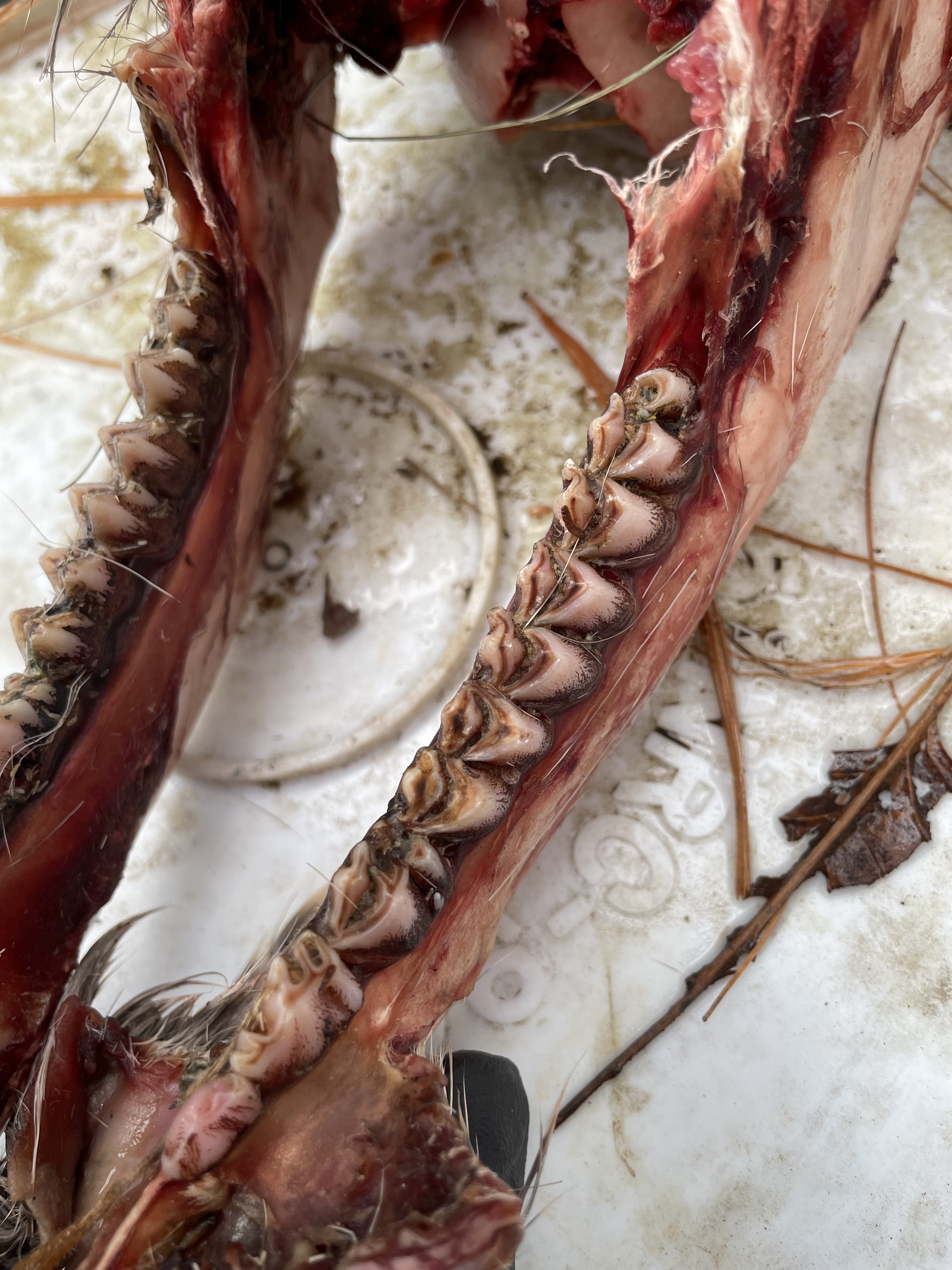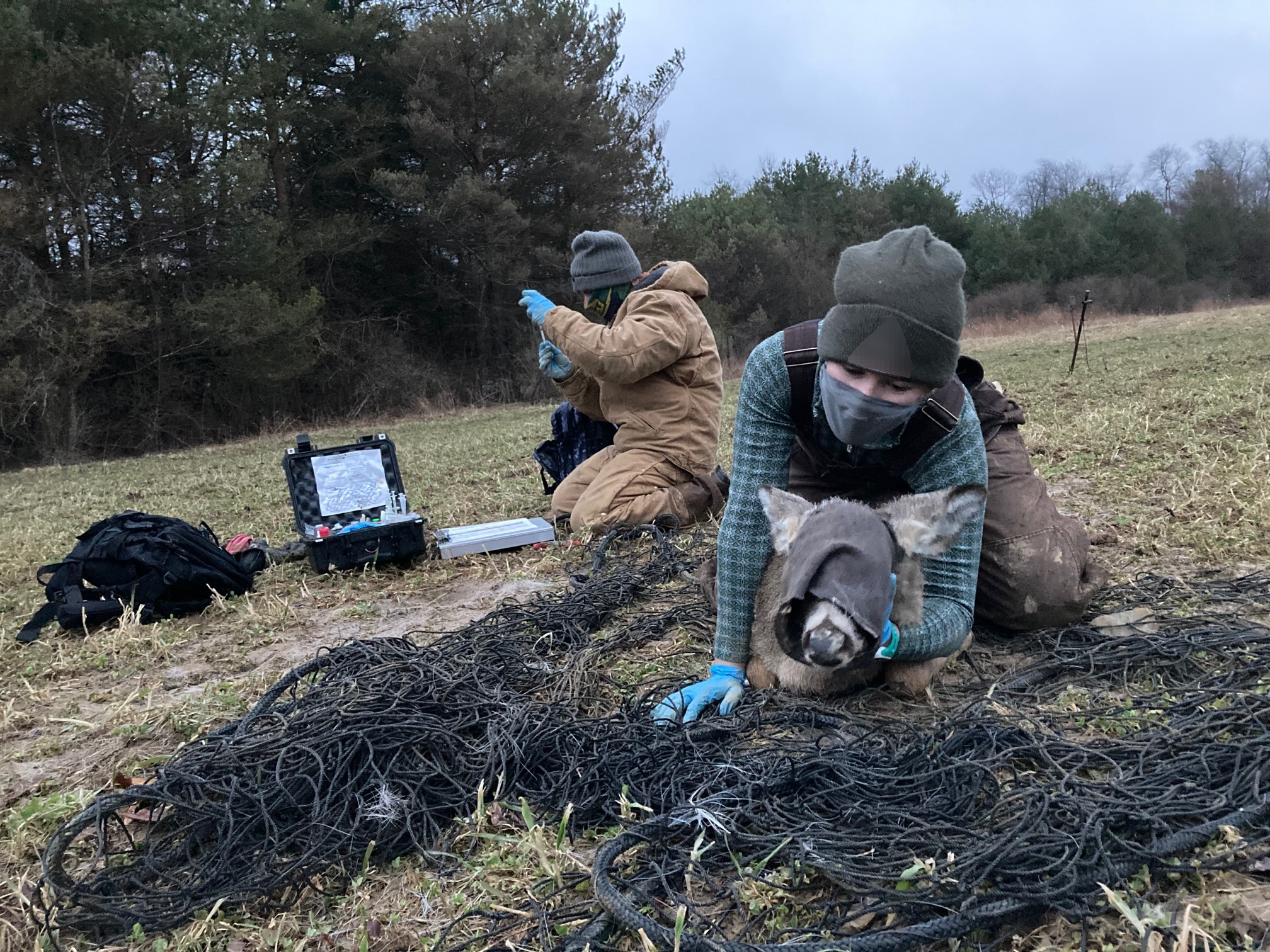So remember that buck that ended up 40+ miles from where he was captured?
Yeah, there’s more to that story. When 20256 was captured in March of 2022, the crew aged him as a fawn. That means he was born the year before in 2021 and would have been coming up on his first birthday in 2022.
A deer’s first birthday is a milestone and marks the beginning of big travel plans. Dispersal is a given for three-quarters of yearling bucks and even some yearling does. But imagine our surprise when we got word that 20256 remains were found 41 miles from where he was last seen. Surprised enough to make him the subject of his own blog post!
There wasn’t much left of 20256 when he was discovered – only bones and some hide. But his head was still there as well as his jaw. It was collected to verify his age. Buck 20256 should have been 2.5 years old.

This is NOT the jaw of a 2.5-year-old deer. From the wear pattern, he is clearly older and we estimate him to be 3.5 years old.
There are a few things to unpack here.
Let’s start with our first encounter at the trap site. How, you may ask, can a deer be aged incorrectly at capture? It happens. We have protocols in place to age live deer but it’s not always easy. You still need to look at teeth (the front ones) and there is still a level of judgement that needs to be used to gauge the size. And deer aren’t cooperative.
But the real mystery is why a 2.5-year-old deer would move 40+ miles. Dispersal is a common phenomenon for 12- to 18-month-old deer but after that it is a rarity. In research conducted in PA in the early 2000s – of the 549 juvenile bucks captured and collared 70% dispersed; of the 107 adult bucks captured and collared, ZERO dispersed.
Since 2000, we have collared 355 adult bucks and none ever left home.
It doesn’t mean it can’t happen. A few years ago a 3.5 year old buck in Missouri went MIA with a GPS collar. He hit the road on November 4th traveling ~186 miles in 22 days. This type of movement is so rare N17003 was the subject of an entire scientific paper.
20256 will have to settle for a couple of blog posts.
Why might a seemingly established adult buck travel 40+ miles (or 186 miles in N17003’s case)? The Missouri researchers hypothesize that it was sexual competition or hunting pressure. Sure it’s possible he didn’t like his neighbors and was upset about people trying to kill him. Anybody would, but is that enough to pack your bags and leave?
As always, we are missing key pieces of the puzzle. We don’t know when 20256 left. Was it in the fall like N17003? Or was it shortly after capture? We’ve had other deer leave their home range in winter and summer to go on little adventures. But they were wearing GPS collars (and always returned home). No GPS collar for 20256 so no detailed travel log.
Was he returning to a place he knew? An un-dispersal of sorts. Blog readers know the story of our most famous research deer, Buck 8917. He died a mile outside of his established home range – a place he had only visited once in 2 years. Curious for sure but excursions by adult bucks have been documented in winter and spring.
40+ miles is not an excursion. It’s an expedition!
When and why 20256 left the area he called home in 2022 will be forever a mystery. All we have is the start and the end point of his travels. Maybe he was in the DWPP (Deer Witness Protection Program) and was relocated. Looks like whatever he was running from finally caught up with him.
-Jeannine Fleegle
Wildlife Biologist
PA Game Commission
